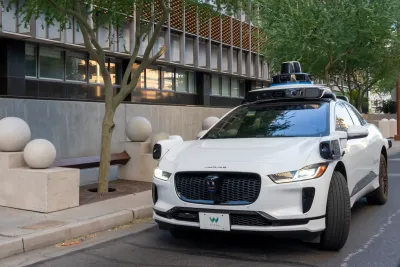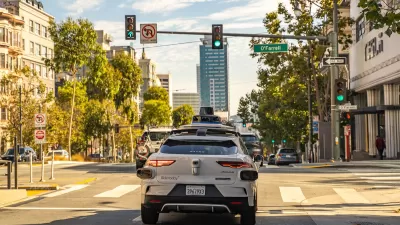Assessing the readiness of current infrastructure for autonomous vehicles to understand the challenges and necessary adaptations for seamless integration in urban environments.

As autonomous vehicles (AVs) transition from concept to reality, urban planners face the critical task of preparing city infrastructure to accommodate this technological evolution. Technology has advanced rapidly, but infrastructure remains a significant hurdle. Roads, traffic systems and urban planning must upgrade to support seamless AV integration. Explore the current state of infrastructure, the modifications necessary and the collaborative efforts required for a successful transition.
The current state of urban infrastructure
Modern urban infrastructure is primarily designed for human drivers, presenting challenges for AVs. While some cities have started adapting, the overall readiness of infrastructure is still in its early stages. Key observations include:
- Road markings and signage: Many cities struggle with maintaining clear and consistent road markings and signage, which are crucial for AV navigation. Faded lane markings and unstandardized road signs create confusion for cars’ sensors, impacting their ability to make accurate decisions.
- Traffic management systems: Traditional traffic signals cannot communicate with AVs, limiting real-time data exchange. Most places still rely on fixed-timing or sensor-based traffic lights that are optimal for human drivers rather than adaptive AI-driven systems.
- Digital infrastructure: The absence of widespread 5G networks and edge computing capabilities affects AVs' ability to process real-time data. Reliable connectivity is essential for them to communicate with smart infrastructure and avoid hazards.
- Lack of AV-specific regulations: Many cities lack clear policies on AV integration, leading to inconsistencies in testing and deployment. Without standardized regulations, infrastructure development remains fragmented.
Essential modifications and upgrades
For cities to support AVs effectively, targeted infrastructure improvements are necessary:
- Dedicated lanes for autonomous vehicles: Implementing exclusive lanes for AVs can increase safety and minimize unpredictable interactions with human drivers.
- Advanced traffic management technologies: Upgrading traffic signals with sensors and AI-driven adaptive controls allows AVs to interact with current data.
- Vehicle-to-infrastructure (V2I) communication: Developing V2I systems will allow AVs to exchange data with traffic signals, road sensors and other infrastructure.
- Enhanced road markings and signage: AVs rely on cameras and sensors to interpret their surroundings, making well-maintained road markings essential.
- Robust digital infrastructure: Cities investing in fiber-optic networks and cloud-based data centers will have an advantage in AV integration.
Collaborative efforts for a cohesive strategy
Successful AV integration requires close collaboration between urban planners, technology developers and policymakers. Without clear regulations, infrastructure development remains fragmented, and AV deployment can become inconsistent.
A strong example of proactive AV legislation is Pennsylvania’s Act 130 of 2022, which modernized the state’s Vehicle Code to regulate the testing and deployment of highly autonomous vehicles. Pittsburgh — home to several sector leaders — played a crucial role in shaping this framework.
Legislators, the Pennsylvania Department of Transportation and autonomous vehicle companies developed it, ensuring regulations aligned with industry advancements. This approach demonstrates how cities can create a structured yet flexible regulatory environment that supports AV innovation while maintaining safety and public confidence.
For successful AV adoption, cities must establish clear regulations and guidelines to standardize AV requirements. Governments and tech companies should work together to fund smart infrastructure projects. Additionally, addressing public concerns about AV safety and job displacement will be crucial for widespread adoption.
The road ahead for AVs
While autonomous vehicle technology has made significant advancements, urban infrastructure still has a long way to go before fully supporting AVs. Unfortunately, this means many of the world’s roads have some time before they’ll be ready for the cars of the future.
By prioritizing enhanced road markings, dedicated lanes, smart traffic systems, robust digital infrastructure and collaborative policymaking, cities can create a safer and more efficient transportation network. With proper planning and investment, AVs can seamlessly integrate into urban environments, improving mobility for all.

Rethinking Redlining
For decades we have blamed 100-year-old maps for the patterns of spatial racial inequity that persist in American cities today. An esteemed researcher says: we’ve got it all wrong.

Planetizen Federal Action Tracker
A weekly monitor of how Trump’s orders and actions are impacting planners and planning in America.

California High-Speed Rail's Plan to Right Itself
The railroad's new CEO thinks he can get the project back on track. The stars will need to align this summer.

US Senate Reverses California EV Mandate
The state planned to phase out the sale of gas-powered cars by 2035, a goal some carmakers deemed impossible to meet.

Trump Cuts Decimate Mapping Agency
The National Geodetic Survey maintains and updates critical spatial reference systems used extensively in both the public and private sectors.

Washington Passes First US ‘Shared Streets’ Law
Cities will be allowed to lower speed limits to 10 miles per hour and prioritize pedestrians on certain streets.
Urban Design for Planners 1: Software Tools
This six-course series explores essential urban design concepts using open source software and equips planners with the tools they need to participate fully in the urban design process.
Planning for Universal Design
Learn the tools for implementing Universal Design in planning regulations.
City of Camden Redevelopment Agency
City of Astoria
Transportation Research & Education Center (TREC) at Portland State University
Regional Transportation Commission of Southern Nevada
Toledo-Lucas County Plan Commissions






























